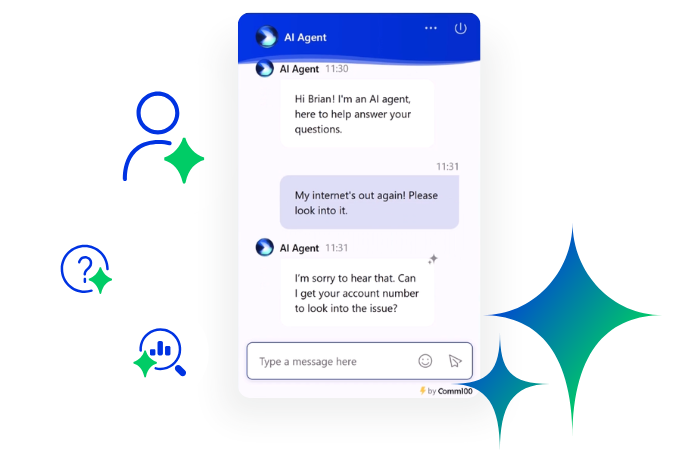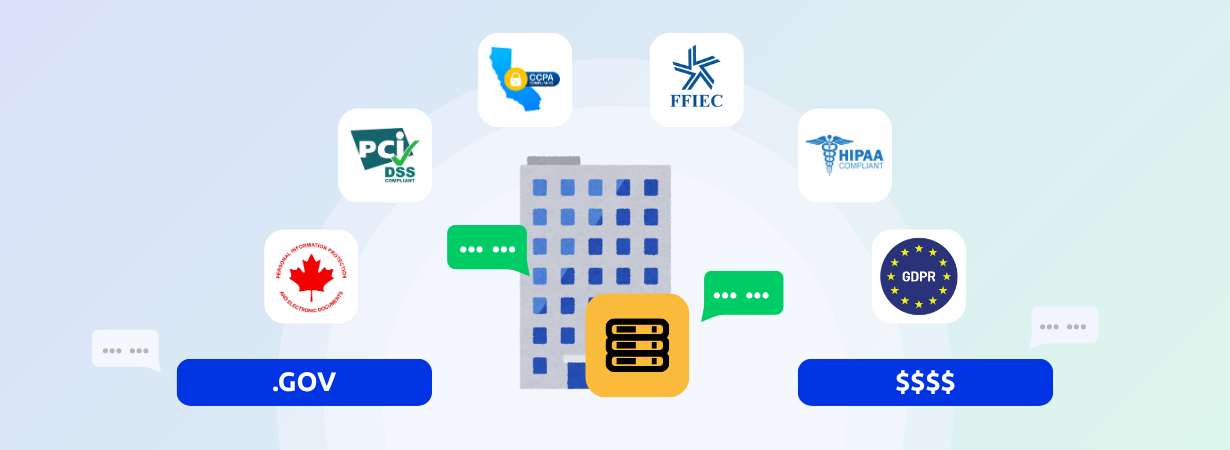Check out our Latest Live Chat Benchmark Report 2025 to explore the most up-to-date insights and data, helping you stay ahead in optimizing your live chat performance.
Millions of live chat data points pass through the Comm100 platform every year. To help organizations improve their team’s performance, as well as uncover the latest trends, we analyze this data and wrap it up in our annual Live Chat Benchmark Report.
In our latest report, we offer exclusive data and insights on these live chat benchmarks 2023:
- Average chats per agent
- Customer satisfaction
- Customer wait times
- Average chat duration
- Mobile live chat monitoring stats
- Industry breakdown
In this blog, we’ll look at some of the key insights from this year’s live chat benchmarks. For a full breakdown of all the data and to help your live chat monitoring, download the free Live Chat Benchmark Report 2023.
Stat 1: 43% increase in chats per agent per month
In 2022, the number of chats handled per agent increased across all team sizes. On a per month basis, agents averaged 1023 chats per agent in 2022, up from 714 in 2021. Compared to only 480 chats per agent in 2020, this represents a significant 113% YOY increase.
Compared to the pandemic era of 2020 that saw many organizations grow their teams to handle increased chat volumes, current economic uncertainty has seen the opposite effect. Many businesses have been forced to cut costs, leading to reduced team sizes and agents being asked to handle greater chat volumes. The repercussions of increased chat volumes per agent lead us to the second of our live chat benchmarks.
Stat 2: 2.9% decrease in positive customer satisfaction rate
In 2022, the average live chat customer satisfaction rate (CSAT) fell sharply by 2.9% compared to 2021. Since 2017, CSAT rates have steadily grown, but this reversed this year with a CSAT of only 81.1%. This perhaps is the repercussion of increased chat volume per agent.
With teams facing 43% more chats per agent on average, it appears that the increased volume pushed some agents too far and resulted in an inability to perform at a high level. Managers should take this impact of high chat volumes into consideration and set limits on concurrent chats to ensure that customer experience doesn’t suffer. It’s not all doom and gloom however, as we will see in our third live chat benchmark.
Stat 3: 17% decrease in wait time
In 2022, average live chat wait time dropped by 17% to just 30 seconds. Despite fewer resources for customer service teams under tough economic conditions, wait times still decreased in a major win for live chat software. Even as agents handled more chats in 2022, the efficiency of live chat allowed agents to respond quickly to customer queries.
One driver of reduced wait times was the adoption of chatbots to handle common requests. Thanks to their unlimited capacity, a single chatbot can handle as much as 80% of incoming chats without human intervention. Chats handled by bot receive an immediate response, while customers requiring agent support get faster help with shorter queues and wait times. As AI chatbots answer more queries, they learn from past conversations, improving their ability to resolve questions and handle challenging requests.
Download the Live Chat Benchmark Report 2023
Live chat monitoring is essential for the success of any team. To get a full breakdown of all the key live chat benchmarks you need broken down by team size and industry, download our free Live Chat Benchmark Report 2023.






